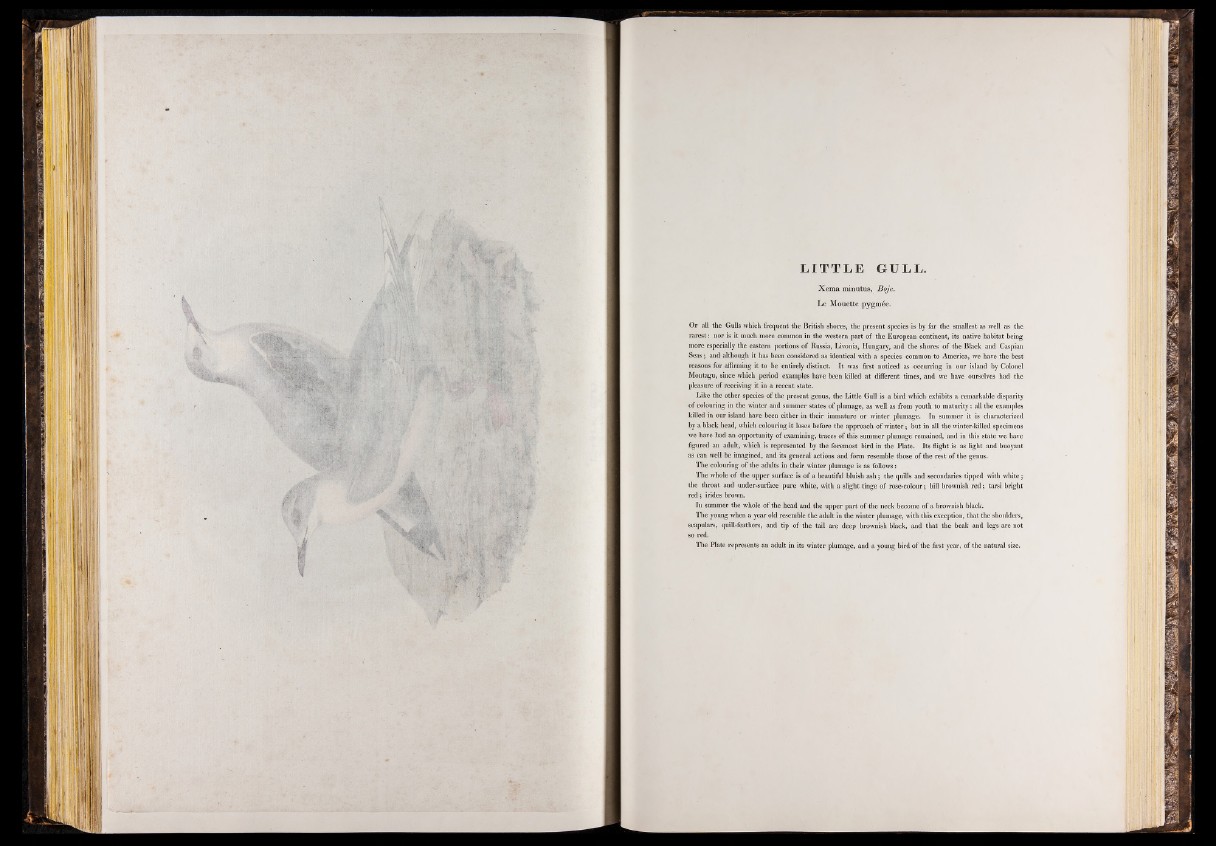
L IT T L E GULL.
Xema minutus, Boje.
Le Mouette pygmée.
Of all the Gulls which frequent the British shores, the present species is by far the smallest as well as the
rarest : nor is it much more common in the western part of the European continent, its native habitat being
more especially the eastern portions of Russia, Livonia, Hungary, and the shores of the Black and Caspian
Seas ; and although it has been considered as identical with a species common to America, we have the best
reasons for affirming it to be entirely distinct. It was first noticed as occurring in our island by Colonel
Montagu, since which period examples have been killed at different times, and we have ourselves had the
pleasure of receiving it in a recent state.
Like thé other species of the present genus, the Little Gull is a bird which exhibits a remarkable disparity
of colouring in the winter and summer states of plumage, as well as from youth to maturity : all the examples
killed in our island have been either in their immature or winter plumage. In summer it is characterized
by a black head, which colouring it loses before the approach of winter ; but in all the winter-killed specimens
we have had an opportunity of examining, traces of this summer plumage remained, and in this state we have
figured an adult, which is represented by the foremost bird in the Plate. Its flight is as light and buoyant
as can well be imagined, and its general actions and form resemble those of the rest of the genus.
The colouring of the adults in their winter plumage is as follows :
The whole of the upper surface is of a beautiful bluish ash ; the quills and secondaries tipped with white ;
the throat and under-surface pure white, with a slight tinge of rose-colour ; bill brownish red ; tarsi bright
red ; irides brown.
Iu summer the whole of the head and the upper part of the neck become of a brownish black.
The young when a year old resemble the adult in the winter plumage, with this exception, that the shoulders,
scapulars, quill-feathers, and tip of the tail are deep brownish black, and that the beak and legs are not
so red.
The Plate represents an adult in its winter plumage, and a young bird of the first year, of the natural size.